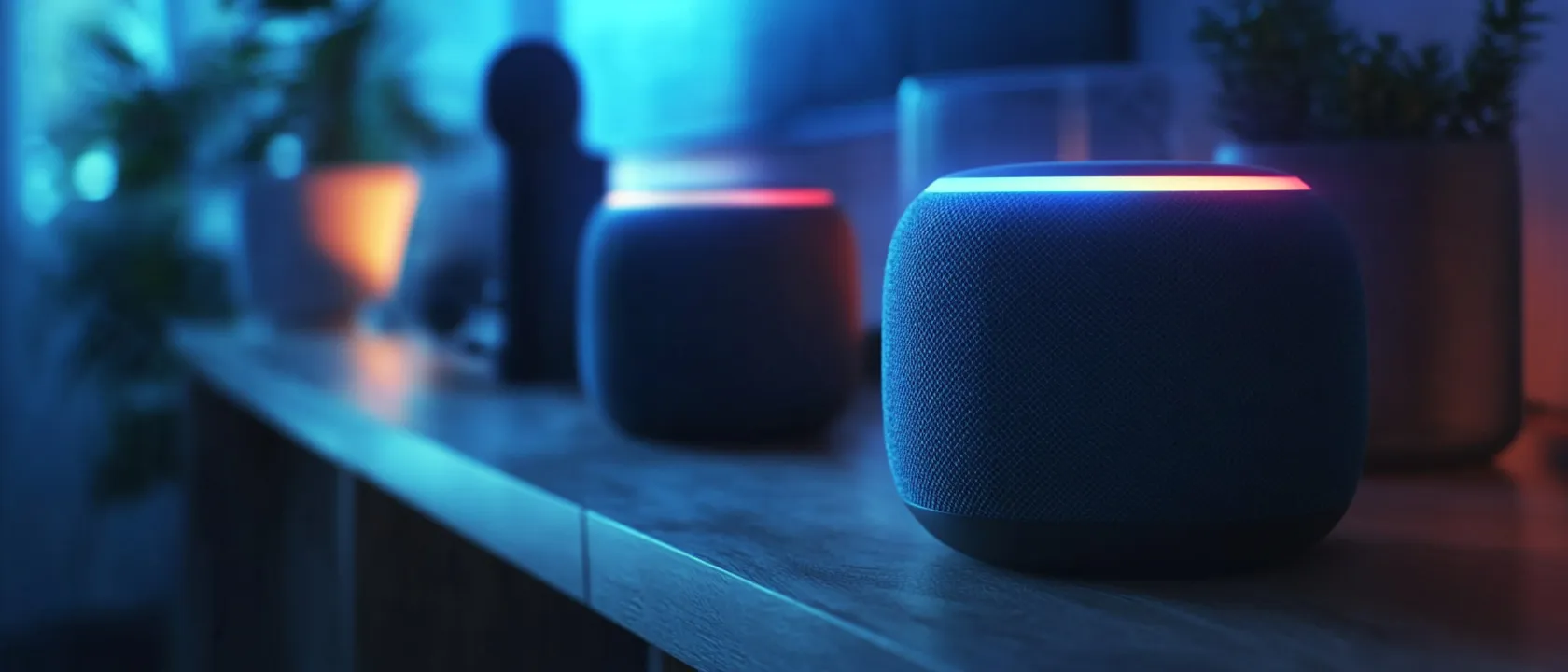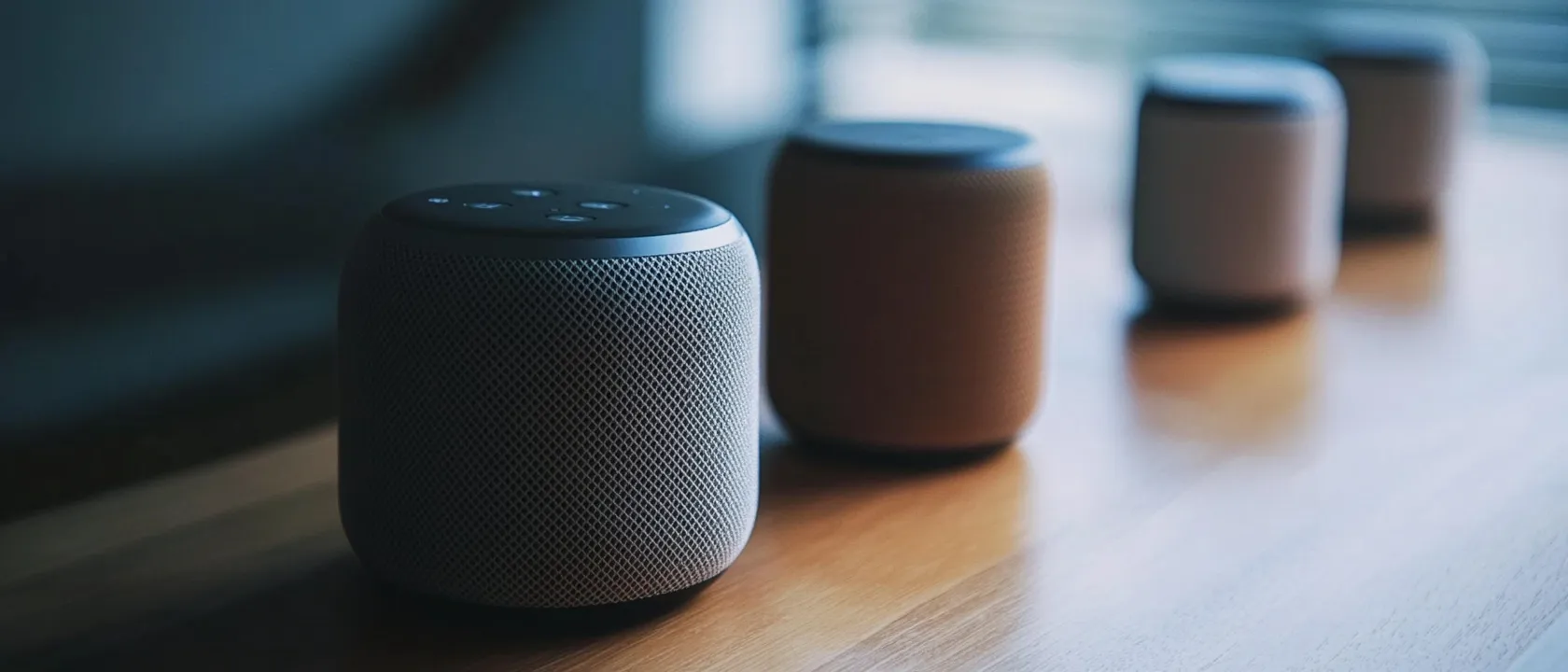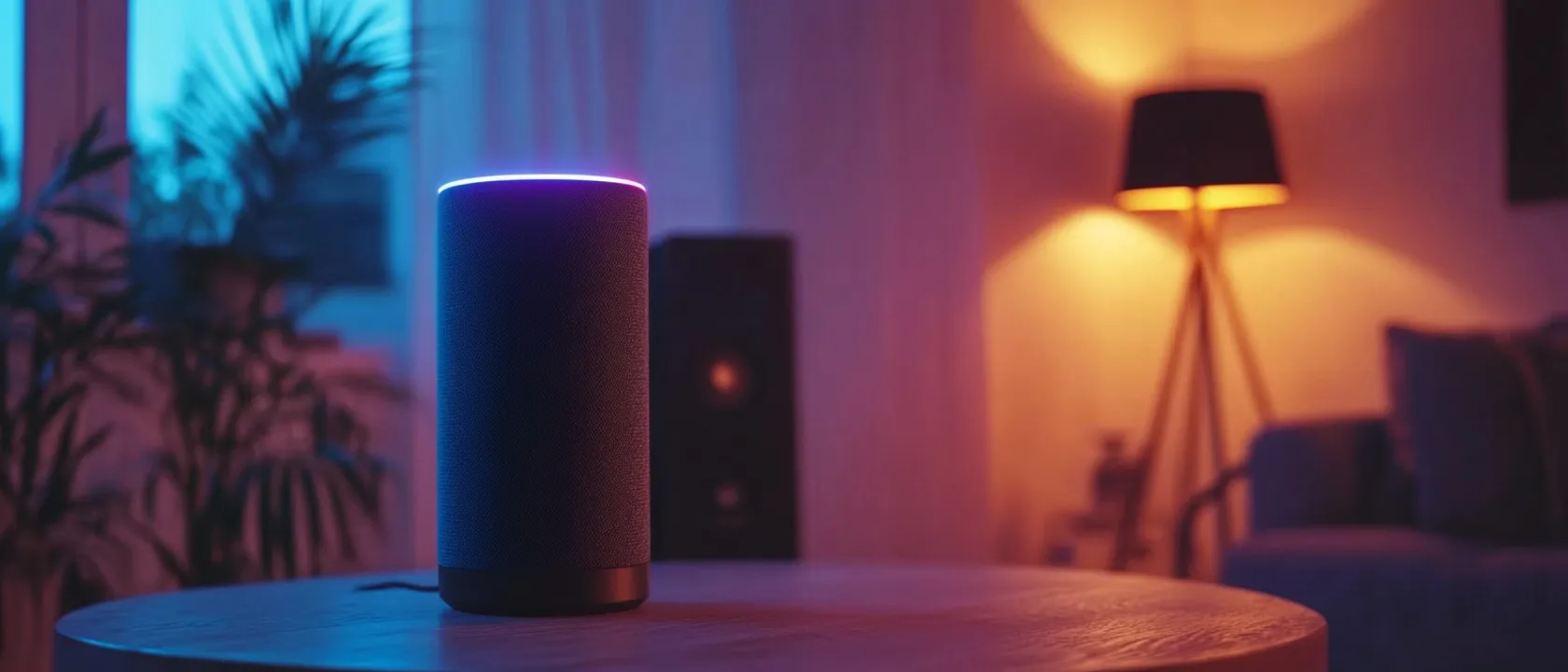The modern home has undergone a remarkable transformation over the past decade, with voice-controlled smart speakers becoming central command hubs for our increasingly connected environments. As these devices evolve from simple music players into sophisticated digital assistants managing everything from lighting to security, three major ecosystems have emerged as the primary contenders for space in our living rooms: Amazon’s Echo with Alexa, Google’s Nest with Google Assistant, and Apple’s HomePod with Siri. Each offers a distinct approach to the intelligent home audio experience, with different strengths, limitations, and philosophies about how we should interact with technology in our most private spaces.
This comprehensive comparison examines the current flagship offerings from these tech giants—the Amazon Echo (4th Gen), Google Nest Audio, and Apple HomePod (2nd Gen)—to help you determine which smart speaker ecosystem deserves your investment based on audio performance, assistant capabilities, smart home integration, privacy considerations, and overall value proposition.
Core Technologies and Ecosystem Approaches
Before diving into direct comparisons across specific attributes, it’s worth understanding the fundamental technological and philosophical differences that shape each company’s smart speaker strategy.
Amazon Echo: The Versatile Pioneer
Amazon essentially created the modern smart speaker category with the original Echo in 2014. Their approach emphasizes broad compatibility and extensive third-party integrations through their Alexa Skills platform, which now boasts over 100,000 capabilities from various developers and services.
The latest Amazon Echo (4th Gen) features:
- Custom-designed 3.0-inch woofer and dual 0.8-inch tweeters
- Amazon’s AZ1 Neural Edge processor for on-device processing
- Zigbee smart home hub and Matter controller integration
- Sidewalk Bridge capabilities for extended smart home connectivity
- Optional temperature sensor for home environment monitoring
- Retail price: $99.99
Amazon’s strategy prioritizes making Alexa an omnipresent assistant across as many devices and use cases as possible, focusing on accessibility rather than maintaining a closed ecosystem.
Google Nest Audio: The Knowledge Navigator
Google entered the smart speaker market in 2016 with Google Home (now rebranded as Nest Audio), leveraging their unparalleled search and knowledge graph capabilities. Google’s approach centers on conversational intelligence and seamless integration with their services like YouTube, Maps, Gmail, and Calendar.
The current Nest Audio features:
- 75mm woofer and 19mm tweeter arrangement
- Three far-field microphones with advanced noise cancellation
- On-device machine learning chips for faster response times
- Multi-room audio capabilities with speaker grouping
- Thread border router for Matter connectivity
- Retail price: $99.99
Google positions its speakers as natural extensions of its knowledge ecosystem, emphasizing understanding context, natural language processing, and delivering accurate information from the web.
Apple HomePod: The Premium Audio Experience
Apple launched the original HomePod in 2018, focusing initially on superior sound quality before gradually expanding smart capabilities. Their approach prioritizes acoustic performance and deep integration within the Apple ecosystem, making the HomePod an extension of the iPhone/iPad/Mac experience rather than a standalone platform.
The HomePod (2nd Gen) features:
- High-excursion woofer with custom amplifier
- Five-tweeter array with beamforming technology
- Room-sensing technology to optimize audio output
- S7 chip for computational audio processing
- Temperature and humidity sensors for environmental awareness
- Matter controller capabilities
- Retail price: $299
Apple’s philosophy emphasizes privacy, security, and creating a seamless experience for those already invested in their product ecosystem, often at the expense of third-party compatibility.

Audio Performance: Sound Quality and Music Experience
While smart capabilities receive much attention, these devices remain speakers at their core. Audio quality varies significantly across the three platforms, reflecting different priorities and price points.
Raw Sound Quality and Musicality
Apple HomePod delivers the most impressive audio performance by a considerable margin, justified by its substantially higher price point. The computational audio approach—where the S7 chip continuously analyzes and adjusts output based on room acoustics—creates remarkably balanced sound with exceptional clarity. Bass response is rich and controlled, midrange is detailed without being forward, and high frequencies extend smoothly without harshness. The speaker’s ability to fill even large rooms with consistent, high-quality sound from all listening positions is particularly impressive.
Google Nest Audio represents a significant improvement over earlier Google Home models, offering balanced audio with good stereo separation when used in pairs. The tuning emphasizes vocal clarity, which benefits both music and assistant responses. Bass response is present but somewhat restrained compared to competitors, while the higher frequencies demonstrate good detail without becoming fatiguing. The overall presentation is pleasant and natural, if not exceptionally dynamic or expansive.
Amazon Echo (4th Gen) delivers surprisingly full sound from its spherical design, with more pronounced bass than the Nest Audio. The 360-degree approach creates reasonably consistent sound throughout a room, though critical listening reveals some midrange recessing that can make certain vocal performances less distinct. At higher volumes, the Echo shows more compression and less refinement than either competitor, though it remains entirely satisfactory for casual listening.
Multi-Room and Stereo Capabilities
All three platforms support expanding to multi-room audio and stereo pairing, though with varying implementations:
Apple HomePod excels with its automatic stereo pairing—simply placing two HomePods in the same room triggers an automatic configuration process that calibrates the speakers for optimal stereo performance. The AirPlay 2 protocol delivers stable multi-room playback with minimal latency and easy grouping through Control Center on iOS devices. The spatial awareness capabilities allow HomePods to dynamically adjust their output based on placement, compensating for walls and other acoustic challenges.
Google Nest Audio offers straightforward stereo pairing through the Google Home app, though the process requires manual configuration. Multi-room capabilities are robust across the Google/Nest ecosystem, with speaker groups remaining stable once configured. The system allows mixing different Google/Nest speaker models within the same group, providing flexibility for expanding over time.
Amazon Echo provides similar stereo pairing and multi-room functionality, managed through the Alexa app. The implementation is reliable though somewhat less intuitive than Apple’s approach. One unique advantage is the Echo’s compatibility with third-party speakers that integrate Alexa, allowing for more diverse audio setups across manufacturers.
Music Service Compatibility
The usefulness of a smart speaker for music depends significantly on compatibility with preferred streaming services:
Amazon Echo offers the most comprehensive music service support, including Amazon Music (standard and HD), Spotify, Apple Music, Pandora, Tidal, Deezer, SiriusXM, and many others. The platform’s openness to third-party services creates exceptional flexibility for most listening preferences.
Google Nest Audio supports Google-owned YouTube Music and YouTube premium content, along with Spotify, Apple Music, Pandora, and Deezer. Notable limitations include no native support for Amazon Music or Tidal, though Bluetooth streaming provides a workaround.
Apple HomePod maintains the most restrictive approach, with native support limited to Apple Music, Apple Podcasts, and a handful of services like Pandora and iHeartRadio. While AirPlay 2 allows streaming from almost any iOS app, the lack of direct voice control for popular services like Spotify represents a significant limitation for non-Apple Music subscribers.
Voice Assistant Capabilities: The Intelligence Factor
The voice assistant forms the core of the smart speaker experience, handling everything from simple timer requests to complex multi-step tasks.
Natural Language Understanding and Conversation Flow
Google Assistant demonstrates the most sophisticated natural language processing, excelling at understanding context, following conversation threads, and responding to naturally phrased questions. The ability to handle follow-up questions without repeating context creates more human-like interactions. For example, you can ask, “Who is the president of France?” followed by “When was he born?” without specifying who “he” refers to—Google Assistant maintains the contextual thread.
Amazon Alexa has improved significantly in conversational abilities but still often requires more structured command phrasing. Alexa can maintain some contextual awareness between questions but typically needs more explicit instructions than Google Assistant. The system excels at recognizing specific command patterns and executing defined skills rather than open-ended conversations.
Apple Siri on HomePod has made strides in natural interaction but remains the most limited in conversational capabilities. Siri frequently loses contextual threads between questions and has more difficulty with accents and natural speech variations than its competitors. However, for specific tasks within its domain of competence, Siri responds quickly and reliably.
Knowledge Breadth and Information Accuracy
Google Assistant leverages Google’s search dominance to provide the most comprehensive and typically accurate responses to general knowledge questions. The assistant can draw from Google’s vast knowledge graph to answer obscure questions, explain complex concepts, and provide nuanced information. For factual queries, Google Assistant remains the clear leader among the three platforms.
Amazon Alexa offers solid information capabilities, though responses sometimes lack the depth and nuance of Google’s. Alexa draws from a combination of Wikipedia, Bing search results, and curated information sources. For straightforward factual questions, Alexa generally provides correct answers, though complex or nuanced topics may receive simplified responses.
Apple Siri has historically struggled with general knowledge questions compared to competitors, though recent improvements have narrowed the gap. Siri now uses web search results more effectively but still provides less detailed information for many queries than either Google Assistant or Alexa. Where Siri excels is in accessing personal information from connected Apple devices—calendar events, messages, and emails—while maintaining strict privacy boundaries.
Voice Recognition Accuracy
Voice recognition performance involves both accurately detecting the wake word and correctly interpreting subsequent commands:
Google Nest Audio demonstrates excellent wake word detection even in noisy environments, rarely triggering falsely while consistently responding to legitimate activations. Command recognition benefits from Google’s extensive voice processing experience, with strong performance across different accents and speech patterns.
Amazon Echo’s wake word detection has improved with each generation, though it remains somewhat more prone to false activations than Google’s implementation. The Echo’s far-field microphone array performs admirably in picking up commands from across rooms, even with music playing at moderate volumes.
Apple HomePod features impressive wake word accuracy, particularly in distinguishing between similar-sounding phrases. The beamforming microphones effectively isolate voices from background noise, though command recognition accuracy lags somewhat behind Google, particularly with non-American accents and complex phrases.

Smart Home Integration: Control and Compatibility
Smart speakers often serve as hubs for broader smart home ecosystems, with important differences in device compatibility and control capabilities.
Device Ecosystem Compatibility
Amazon Echo offers the most extensive smart home device compatibility, supporting over 140,000 products across thousands of brands. The built-in Zigbee hub and Matter controller functionality allow direct connection to compatible devices without requiring additional bridges or hubs. The breadth of compatibility creates unmatched flexibility for incorporating diverse smart home products.
Google Nest Audio supports a wide though somewhat smaller range of compatible devices, with particular strength in Google’s own Nest products (thermostats, cameras, doorbells). The recent addition of Matter support has expanded compatibility significantly, though some devices still work more seamlessly with Alexa than Google Assistant.
Apple HomePod has historically maintained the most restricted compatibility through Apple’s HomeKit framework, which emphasizes security but limits device selection. The adoption of Matter has improved this situation, though the total number of compatible devices remains smaller than either Amazon or Google ecosystems. The HomePod does offer unique capabilities as a Thread border router, supporting this emerging low-power mesh networking standard for smart home devices.
Control Experience and Automation
Amazon Alexa provides a robust automation system through Routines, allowing complex multi-step sequences triggered by various conditions (time, location, device state, voice commands). The maturity of the platform is evident in the granular control options and reliability of execution. The companion app offers an intuitive interface for creating and managing these automations without requiring advanced technical skills.
Google Assistant Routines offer similar functionality with particular strength in integrating with Google’s services. For example, routines can incorporate calendar information, commute details from Google Maps, and news briefings from selected sources. The implementation is user-friendly though occasionally less flexible than Alexa’s for certain device-specific controls.
Apple HomeKit Automations through HomePod provide a highly reliable if somewhat less extensive automation experience. Apple’s approach emphasizes security and stability over having the most extensive feature set. One notable advantage is the ability to process automations locally rather than requiring cloud connectivity, resulting in faster and more consistent execution even when internet connectivity is unreliable.
Matter and Future Interoperability
All three platforms have committed to supporting Matter, the new smart home standard designed to improve cross-platform compatibility. Current implementations show:
Amazon Echo devices with Matter support can control compatible smart home devices regardless of which assistant they were originally designed for. This implementation is the most mature, with the latest Echo models serving as effective Matter controllers.
Google Nest Audio supports Matter with increasing device compatibility in each software update. Google’s commitment to the standard appears strong, with good progress in certification and functionality.
Apple HomePod integrates Matter through HomeKit, maintaining Apple’s security-first approach while expanding compatibility. The implementation is still maturing but shows promise for reducing the traditional limitations of the HomeKit ecosystem.
Privacy and Security: Protecting Your Data and Home
As devices that actively listen in our most intimate spaces, privacy considerations have become increasingly important in smart speaker selection.
Privacy Controls and Transparency
Apple HomePod emphasizes privacy as a core design principle, with local processing for many requests and anonymized data handling when cloud processing is required. Siri requests are not associated with an Apple ID, and voice recordings are not retained by default. Physical indicators clearly show when the microphone is active, and Apple has consistently prioritized privacy features over data collection capabilities.
Google Nest Audio has evolved to include more privacy controls, including options to delete history, disable recording storage, and use Guest Mode for visitors. Physical mute switches disable microphones when privacy is paramount. Google’s business model still relies significantly on data, but they’ve become increasingly transparent about collection practices and improved user control options.
Amazon Echo provides similar privacy controls through microphone mute buttons and the ability to review and delete voice recordings. Amazon has added options to automatically delete recordings and disable human review of interactions. However, the extensive data collection that powers Alexa’s personalization remains an integral part of the platform’s functionality.
Local vs. Cloud Processing
The balance between on-device and cloud processing impacts both privacy and functionality:
Apple HomePod prioritizes on-device processing for many common requests, including basic smart home controls, timers, and alarms. This approach reduces data transmission and improves response speed for these functions, though more complex requests still require cloud processing.
Amazon Echo has increasingly incorporated on-device processing for common commands through its AZ1 Neural Edge processor, reducing cloud dependence for frequently used functions. The hybrid approach aims to balance privacy with maintaining Alexa’s extensive capabilities.
Google Nest Audio similarly employs on-device machine learning for common interactions while leveraging Google’s cloud infrastructure for more complex processing. The balance continues to shift toward more local processing with each generation.

Ecosystem Lock-In and Long-Term Value
Smart speakers represent not just a product purchase but potential investment in an ecosystem that may span multiple devices and services.
Cross-Platform Flexibility
Amazon Echo offers the most ecosystem-agnostic experience, working reasonably well with both Android and iOS devices. The Alexa app provides consistent functionality across platforms, and the system doesn’t strongly presume ownership of other Amazon products (though it certainly encourages them).
Google Nest Audio works well with any Android device and offers adequate functionality with iOS, though with some limitations. The experience is significantly enhanced for users already invested in Google’s services ecosystem (Gmail, Calendar, YouTube, etc.).
Apple HomePod demonstrates the strongest ecosystem lock-in, delivering its full potential only when paired with other Apple devices. While basic functionality works for any user, the seamless handoff between devices, personalized responses, and interoperability largely assume an all-Apple household.
Ongoing Support and Feature Expansion
Google Nest products have received consistent software updates, though Google has occasionally discontinued services or features, sometimes with limited notice. The integration with Google’s constantly evolving service ecosystem means functionality tends to expand over time, even for older hardware.
Amazon Echo devices benefit from Amazon’s strong commitment to backward compatibility, with even first-generation Echo devices still receiving functional updates years after release. New Alexa capabilities typically roll out across the full range of supported devices rather than being limited to the newest models.
Apple HomePod receives highly reliable software updates that maintain security and core functionality, though Apple’s more measured approach to feature expansion means new capabilities arrive somewhat less frequently than on competing platforms. When features do arrive, they tend to be thoroughly tested and reliable.
Value Proposition: Price vs. Performance
The significant price differences between these platforms necessitate evaluating their value propositions:
Amazon Echo at $99.99 delivers exceptional value through its combination of decent audio quality, extensive smart home compatibility, and mature voice assistant. The platform’s openness to third-party services and devices creates flexibility that adapts to various user needs without requiring ecosystem commitment.
Google Nest Audio also priced at $99.99, offers comparable hardware value with superior knowledge-based assistant capabilities. For users already invested in Google’s services, the seamless integration provides additional utility that may tip the value equation in its favor despite some third-party limitations.
Apple HomePod at $299 represents a premium investment justified primarily by superior audio quality and Apple ecosystem integration. For existing Apple users who prioritize audio performance and privacy, the value proposition is reasonable despite the price premium. For others, the restricted ecosystem and higher cost present significant value challenges.
Conclusion: Choosing the Right Smart Speaker for Your Needs
The ideal smart speaker choice depends on your specific priorities and existing technology ecosystem:
Choose Amazon Echo if:
- You want the most flexible smart home controller with the widest device compatibility
- You subscribe to multiple streaming services and want voice control across them
- You value an open ecosystem that works well across different mobile platforms
- You appreciate extensive third-party skills and integrations
- You’re seeking the best overall value without specific ecosystem commitments
Choose Google Nest Audio if:
- You frequently ask factual questions and value Google’s knowledge capabilities
- You’re heavily invested in Google’s service ecosystem (Gmail, Calendar, Maps, etc.)
- You appreciate natural conversation flow and contextual understanding
- You use Android devices as your primary mobile platform
- You want balanced sound quality with an emphasis on voice clarity
Choose Apple HomePod if:
- Superior audio quality is your primary consideration
- You’re already invested in the Apple ecosystem (iPhone, Apple Music, HomeKit)
- Privacy features and local processing are high priorities
- You value computational audio that adapts to your room
- You’re willing to pay a premium for integration and audio performance
The smart speaker market continues to evolve rapidly, with each platform regularly adding capabilities and addressing limitations. What remains consistent is that the best smart speaker is the one that integrates most seamlessly with how you already use technology while providing the specific features that matter most in your daily life.
For most users, the decision extends beyond the speakers themselves to the broader ecosystem they represent—Alexa, Google Assistant, or Siri will likely control an increasing number of experiences throughout your home. Choosing wisely means considering not just today’s capabilities but the trajectory and philosophy of each platform as they continue to develop into ever more central components of our connected lives.







